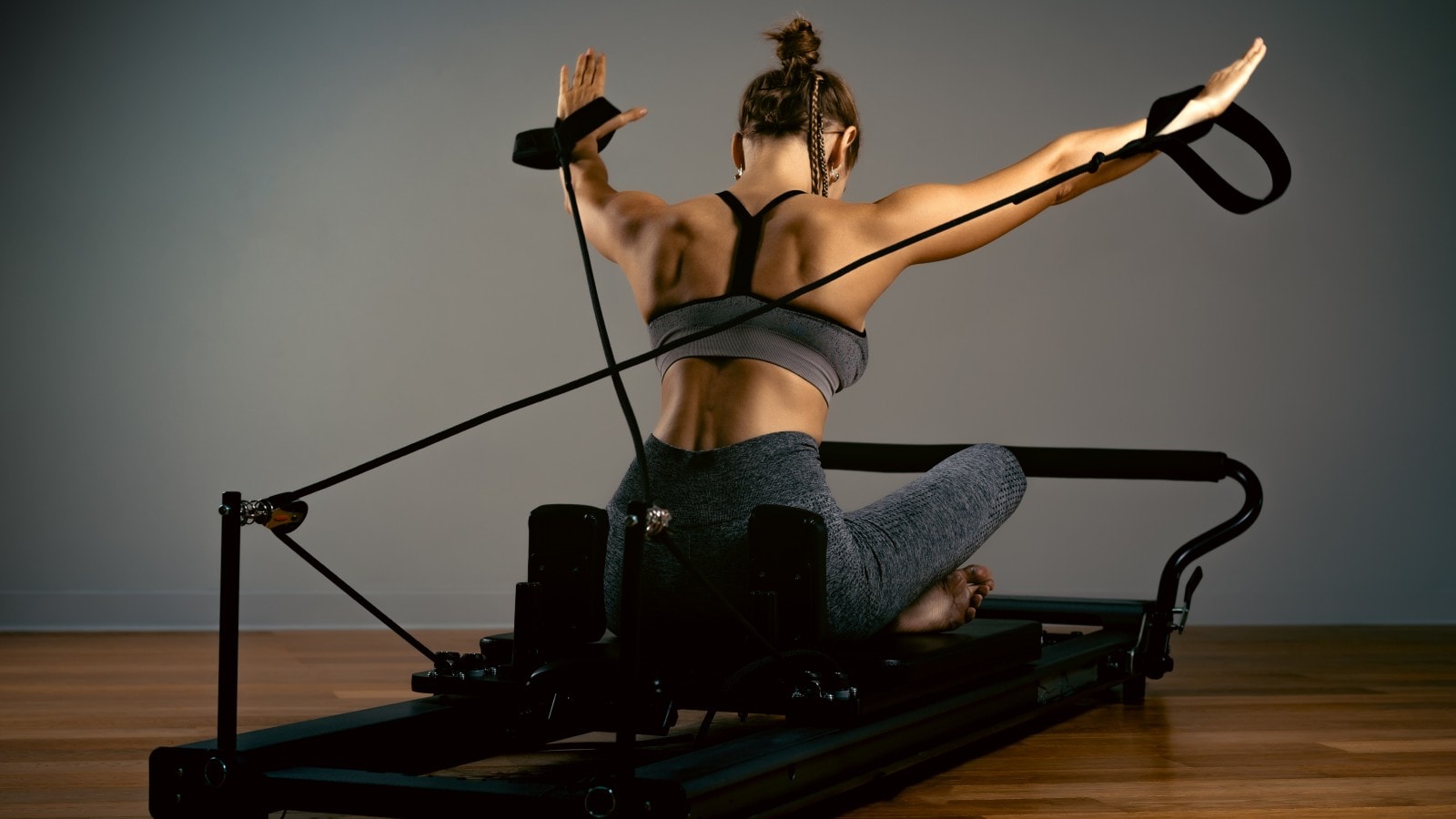
30-minute Pilates workout to strengthen your entire body!
4 months ago | 5 Views
Pilates have become one of the most popular kinds of exercise these days, and for good reason. It is a low-impact, beginner-friendly workout that strengthens core muscles, improves flexibility, and enhances posture. The beauty of these movements lies in their versatility, making them suitable for people of all ages and fitness levels. These target major muscle groups, helping you tone your body, improve balance, and boost your overall well-being. So, if spending hours at the gym is not something you enjoy, try this simple solution for a full-body workout which you can do at home and it will only take 30 minutes.
What is a Pilates workout?
Pilates is a low-impact form of exercise that focuses on regulated movement, stretching, and breathing. It is becoming increasingly popular for both physical fitness and rehabilitation programs. It was introduced to the world in the early 20th century by Joseph Pilates. It is believed to be suitable for beginners and people with certain conditions. A study published in the Physiology and Behaviour Journal analysed the benefit of a few weekly classes. It was observed that it helped in reducing lower back pain while also improving your physical and psychological well-being.

30-minute full-body Pilates workout
Here is an easy and effective exercise regimen you can do in 30 minutes, as explained by Pilates instructor Dr Vijjala Shravani.
1. Hundred
Target: Core, shoulders, legs
How to do it:
- Lie on your back with your legs on the tabletop.
- Lift head, neck, and shoulders off the mat.
- Extend legs to a 45-degree angle while pumping arms up and down.
- Keep your lower back pressed into the mat while doing the entire exercise.
Reps: 100 arm pumps.
2. Roll-up
Target: Abdominals, spine
How to do it:
- Lie flat with legs extended and arms overhead.
- Slowly lift your arms toward the ceiling, then peel your spine off the mat, rolling up to reach forward.
- Reverse the movement to lower back down.
- Keep the motion slow and controlled to engage every part of your core.
Reps: 8–10 repetitions.
3. Single-leg stretch
Target: Abdominals, hip flexors
How to do it:
- Lie on your back with your knees pulled in.
- Curl your head and shoulders up, and extend one leg out to a 45-degree angle while holding the opposite knee toward your chest.
- Switch legs.
- Keep your core engaged to avoid strain in your neck.
Reps: 8–10 repetitions per side.
4. Double-leg stretch
Target: Core, legs
How to do it:
- Lie on your back, pull both knees toward your chest, and lift your head and shoulders.
Inhale, extend legs and arms out, then exhale and circle arms back to shins.
- Keep your lower back pressed into the mat throughout.
Reps: 8–10 repetitions.
5. Criss-cross
Target: Obliques, abdominals
How to do it:
- Lie on your back with hands behind your head, and knees in a tabletop position.
- Curl up and twist your torso, bringing one elbow toward the opposite knee while extending the other leg.
- Alternate sides.
- Keep the movement controlled to engage the obliques.
Reps: 8–10 repetitions per side.
6. Teaser
Target: Core, hip flexors
How to do it:
- Lie flat with knees bent and arms overhead.
- Roll up into a “V” shape with legs extended at 45 degrees, reaching arms forward toward your legs.
- Roll up smoothly, engaging your core throughout.
Reps: 5–8 repetitions.
7. Leg circles
Target: Core, hip stabilisers
How to do it:
- Lie on your back, one leg extended towards the ceiling, the other flat on the floor.
- Circle the raised leg in small circles, switching directions halfway.
- Engage your core to prevent your hips from rocking.
Reps: 6–8 circles per direction.
8. Single straight-leg stretch
Target: Core, flexibility
How to do it:
- Lie on your back with your legs extended toward the ceiling.
- Lift your head, neck, and shoulders, and alternate pulling one leg toward you while extending the other.
- Keep your lower back flat on the mat.
Reps: 8–10 repetitions per side.
9. Double-leg lower lift
Target: Lower abdominals
How to do it:
- Lie on your back with your legs extended toward the ceiling.
- Slowly lower both legs down to a 45-degree angle, then lift them back up.
- Keep your lower back pressed into the mat during the entire exercise.
Reps: 8–10 repetitions.
10. Saw
Target: Core, spine mobility
How to do it:
- Sit with legs wide apart, arms stretched out to the sides.
- Twist your torso and reach one hand toward the opposite foot, then return to the centre and switch sides.
- Keep your spine long and avoid hunching forward.
Reps: 6–8 repetitions per side.
11. Swimming
Target: Back extensors, core
How to do it:
- Lie face down, arms and legs extended.
- Lift your arms, chest, and legs off the floor and flutter them, alternating opposite arm and leg.
- Engage your core and avoid straining your lower back.
Reps: 20–30 seconds.
12. Kneeling side kick
Target: Obliques, glutes
How to do it:
- Kneel on one side with the opposite leg extended.
- Lift and lower the extended leg while keeping your core tight and torso still.
- Keep your movements controlled to engage the obliques.
Reps: 8–10 repetitions per side.
13. Spine stretch forward
Target: Core, hamstrings
How to do it:
- Sit tall with legs extended, and arms reaching forward. Inhale, then exhale as you reach forward, articulating through your spine.
- Roll back up slowly.
- Focus on spinal articulation rather than how far you can reach.
Reps: 6–8 repetitions.
14. Wall Pilates roll down
Target: Core, spinal mobility
How to do it:
- Stand against a wall, with your feet slightly away.
- Tuck your chin and slowly roll down, peeling your spine off the wall, then roll back up.
- Keep your movements slow and controlled.
Reps: 6–8 repetitions.
15. Wall plank with leg lift
Target: Core, glutes
How to do it:
- Place hands on the wall at shoulder height and step back into a plank position.
- Alternate lifting each leg.
- Keep your core engaged and hips square as you lift each leg.
Reps: 8–10 repetitions per leg.
What are the benefits of Pilates workout?
Here are all the benefits of incorporating these movements into your fitness routine:
1. Improves core strength
Pilates is well-known for its ability to significantly enhance core strength. Many actions rely on the core, which is made up of muscles in the abdomen, lower back, and pelvic floor. The movements like the hundred, roll-up, and plank target primarily these muscles. It strengthens and stabilises them by engaging the core in each movement. According to a study published in the Journal of Multidisciplinary Healthcare, these exercises can enhance core muscle strength and reduce pain.
2. Increases flexibility
It is an excellent method for enhancing flexibility due to its focus on controlled, flowing movements and mindful stretching. These exercises gradually increase the range of motion, allowing muscles to lengthen and become more flexible. The workout uses a range of stretches, including spinal twists, leg circles, and hamstring stretches, to target main muscle groups. Additionally, working on core strength and stability improves posture and alignment, leading to increased general flexibility. A study published in the Journal of Strength and Conditioning Research shows that people can build muscle strength and become more flexible by doing these simple exercises.

3. Enhances posture
Pilates is famous for its ability to improve posture by strengthening the core muscles, which serve as the body's natural corset. Movements such as the hundred, roll-up, and swan dive strengthen the deep abdominal muscles, lower back, and pelvic floor. A study published in the journal Archives of Rehabilitation Research and Clinical Translation found that it can help people with bad posture.
4. Reduces stress
These sets of movements are an effective stress-relieving and relaxing technique. “Its slow, controlled movements and deep breathing techniques promote mental and physical relaxation. Practitioners can reduce stress and anxiety by concentrating on the present moment and each breath,” says Shravani. It also strengthens core muscles, which can assist in improving posture and relieve physical discomfort caused by stress.
Are there any side effects of Pilates workout?
Here are some potential side effects of a Pilates workout, especially if you are new to the exercise regime or overdo it:
- Muscle soreness: This is common, especially after your first few sessions. It is a sign that your muscles are adjusting to the new workout.
- Back pain: If you have pre-existing back issues or if you don't maintain proper form, you may experience back pain. It's crucial to work with a qualified instructor to ensure correct technique.
- Overuse injuries: If you push yourself too hard or don't allow adequate rest, you may develop overuse injuries like tendinitis.
Consult a healthcare professional before starting any new workout regimen, especially if you have underlying health conditions. Also, work with a certified Pilates instructor to learn proper form and technique. Listen to your body and avoid pushing through pain.
Read Also: Intense 30-minute exercise gives you more brain power than regular workout durations





















